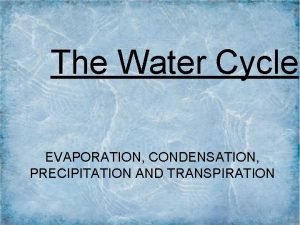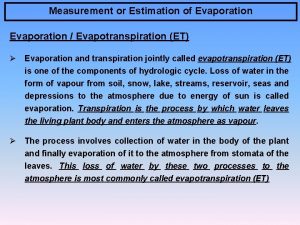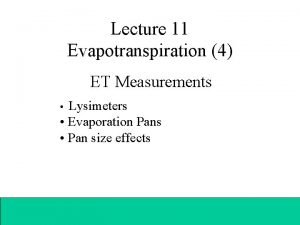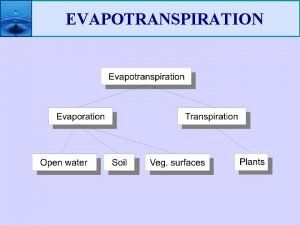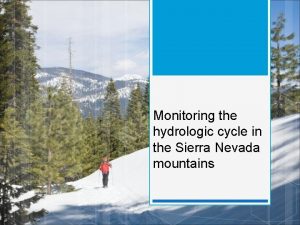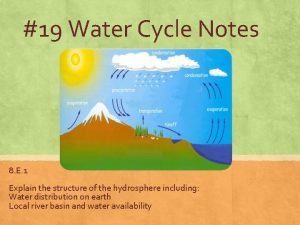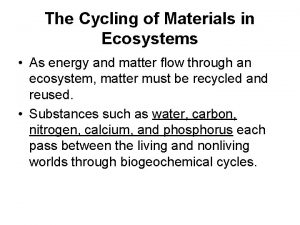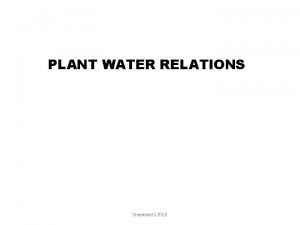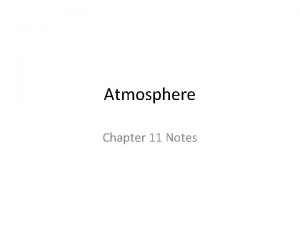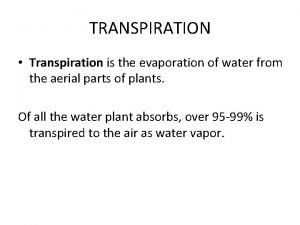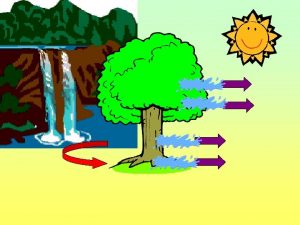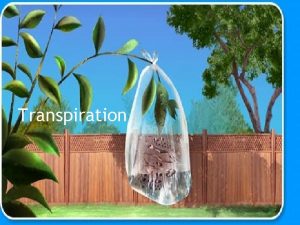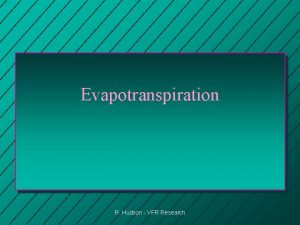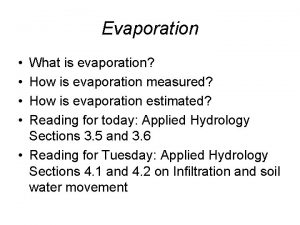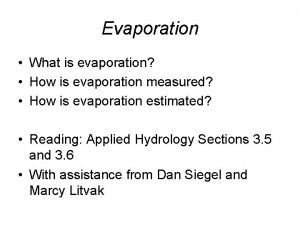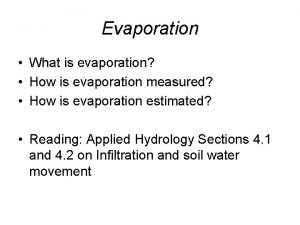Water in the Atmosphere Evaporation transpiration evapotranspiration dew














- Slides: 14

Water in the Atmosphere Evaporation, transpiration, (evapotranspiration), dew, frost, fog (advection, radiation, upslope), saturated air, humidity, condensation, dew point, cloud formation, types of clouds (cumulous, stratus, cirrus), types of precipitation, orographic, convection, and frontal (cyclonic), thunder and lightening http: //www. nasa. gov/centers/goddard/news/topstory/2005/warm_wetworld. html

http: //www. tapintoquality. com/facts/glossary/evaporation. jpg http: //www. sjrcd. org/et/index. htm • Moisture moves into the atmosphere from evaporation and transpiration • When that water vapour converts back to liquid water, it is called condensation

Relative humidity and the dew point • Humidity - the amount of water in the air compared to how much the air can hold – as a percent of the total amount of water based on how much it can hold – When the air contains as much water as it can hold (at a certain temperature), it is SATURATED. • Dew point – the temperature to which the air must be cooled to reach the saturation point • The temperature at which water vapour will condense – Hotter air can hold more moisture than colder air

Dew • When the surface temperature cools, it cools the air next to it • Water condenses out of the air and forms on surfaces • When the temperature of the surface is below freezing, the deposition is frost • http: //www. its. caltech. edu /~atomic/snowcrystals/fro st/frost. htm

Fog • Condensation of water vapor near the earth’s surface • Requires that the air mass be humid, rather than dry • If the air reaches saturation (air that cannot hold any more water at that temperature), fog will be produced as soon as it gets colder

Radiation or Ground Fog • Occurs at night, as the earth cools through radiation • This cools the moist air layer near the surface to the saturation or dew point • The moisture in these nearby layers condenses into water vapour • Usually on clear nights, when heat can escape the lower atmosphere (cloud cover traps heat) • Also, calm nights when no wind mixes the layers of air

http: //www. williamsclass. com/Eighth. Science. Work/Atmosphere. Fog. htm

Upslope Fog

Valley Fog A type of radiation fog

Advection Fog • Occurs when a warm front moves in horizontally over a cold surface, such as a snow pack, or • Warm, moist air comes off the ocean onto the colder land

Evapouration Fog • A type of advection fog • Cold air flows out onto warm water, or • The warm, moist air contains water that has evapourated into it • As it rises, it cools and fog forms as the vapor condensates • Swimming pools, hot tubs, bodies of water in the fall

Orographic Precipitation • Remember that orogeny is the study of mountains? • Orographic precipitation is caused by mountains • Wind pushes warm moist air up the slope of the mountain • Air cools, water vapor condenses, rain falls http: //geography-info. com/physical/atmosphere 1. html

Convectional Precipitation • Hot summer days • Sun heats the surface • Moisture enters the air through evapouration • Warm air rises, cools, clouds form, precipitation falls http: //www. es. flinders. edu. au/~mattom/Intro. Oc/notes/figures/convecti on 2. html

Frontal Precipitation • There are different types of fronts – we’ll look at this later • Remember that a front is the line between a warm and cold air mass • As the warm air in this example rises and cools over the cold air mass, clouds form, rain falls
 Transpirasi yaitu penguapan air
Transpirasi yaitu penguapan air Evaporation condensation precipitation transpiration
Evaporation condensation precipitation transpiration Water and water and water water
Water and water and water water Evapotranspiration
Evapotranspiration Factors affecting evapotranspiration
Factors affecting evapotranspiration Colorado sunken pan
Colorado sunken pan Evapotranspiration
Evapotranspiration Evapotranspiration
Evapotranspiration Evapotranspiration
Evapotranspiration Condensation evaporation precipitation
Condensation evaporation precipitation The cycling of materials
The cycling of materials Adhesion cohesion
Adhesion cohesion Evaporation water cycle
Evaporation water cycle Water
Water Water vapor in the atmosphere percentage
Water vapor in the atmosphere percentage

